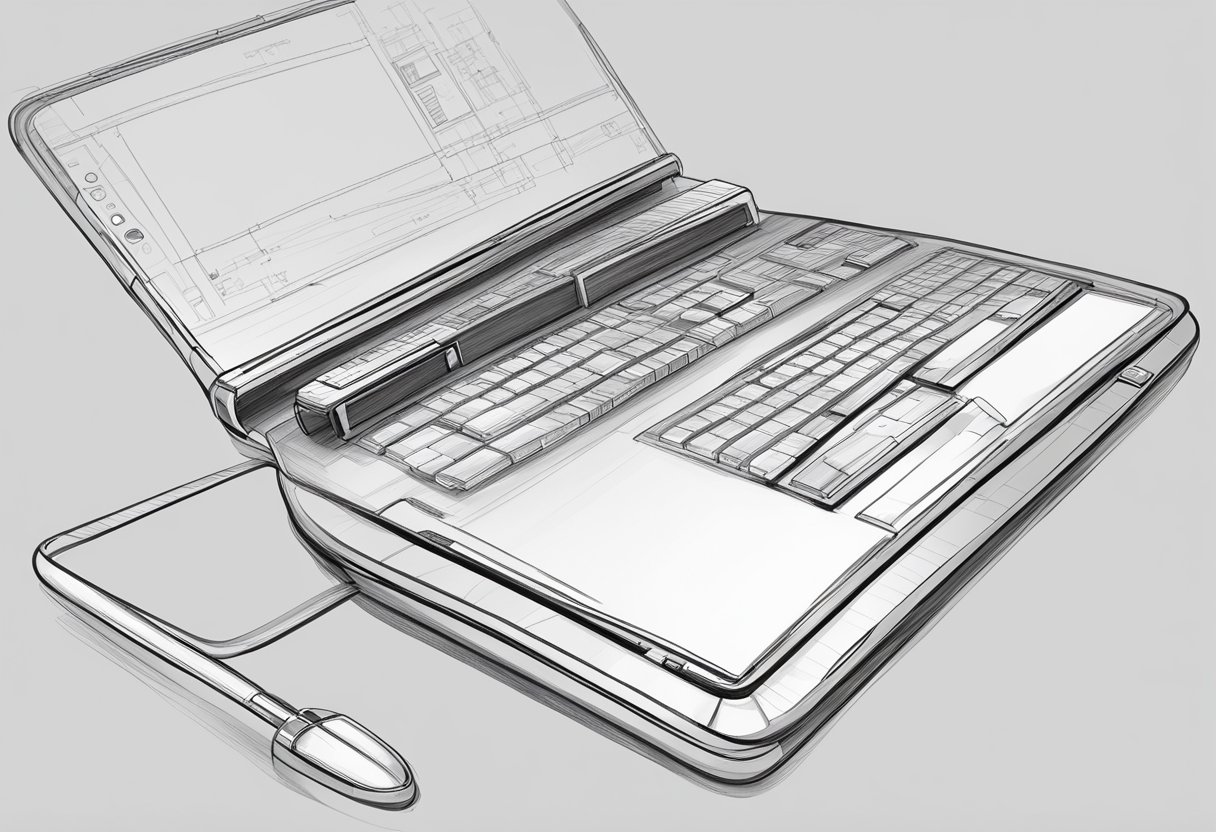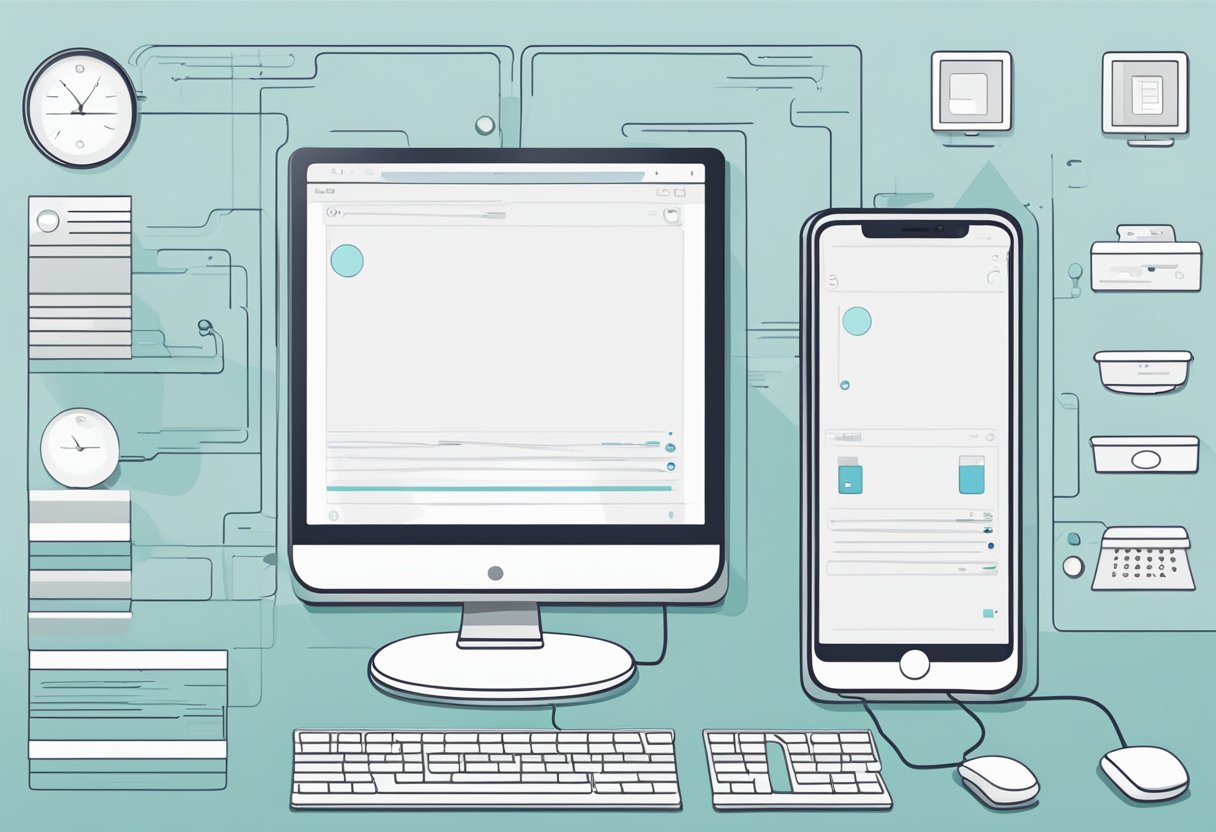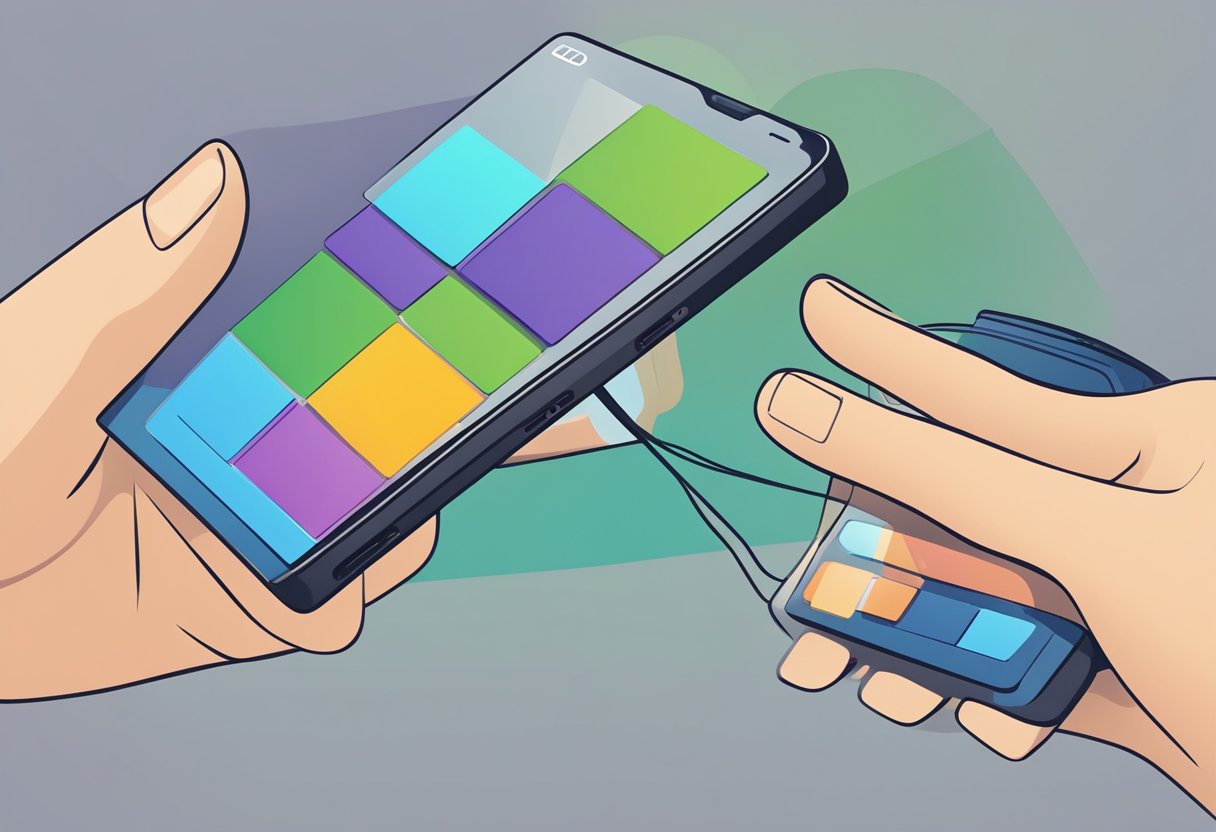Designing for both touch and click inputs can be a challenging task for designers. With the increasing popularity of touch screen devices, designers need to create interfaces that cater to both touch and click inputs.
This requires a thorough understanding of touch and click interactions, as well as the principles of user-centered design.
Understanding Touch and Click Interactions is critical for designing hybrid interfaces. Touch interactions are typically used for tasks such as scrolling and zooming, while click inputs are used for selecting and activating interface elements.
Designers need to consider the differences between these interaction types when designing interfaces that support both touch and click inputs. Additionally, they need to ensure that the interface is responsive to both types of inputs, providing users with a seamless experience.
Design Principles for Hybrid Interfaces should be based on a user-centered design approach. Designers need to consider the needs of their target audience and design interfaces that are accessible and easy to use.
They should also consider the context in which the interface will be used, such as the device type and the user’s environment. Technical challenges and performance should also be taken into account when designing for both touch and click inputs.
Key Takeaways
- Designers need to have a thorough understanding of touch and click interactions when designing hybrid interfaces.
- User-centered design principles should be applied when designing interfaces that support both touch and click inputs.
- Technical challenges and performance should also be taken into account when designing for both touch and click inputs.
Understanding Touch and Click Interactions
The Evolution of Touch and Click Devices
The evolution of input devices has come a long way since the inception of the first computer mouse in the 1960s.
Today, we have touchscreens, touchpads, and even hybrid input devices that combine both touch and click.
The introduction of touchscreens has revolutionized the way we interact with devices, and with the rise of mobile devices, touch is now the primary mode of interaction for many users.
However, click-based interactions are still prevalent in many devices, particularly in desktop computers and laptops. Click-based interactions rely on the use of a mouse or trackpad, where users click on buttons or icons to perform actions.
Comparing Interaction Paradigms
The interaction paradigms for touch and click are distinct and require different design considerations.
Touch interactions rely heavily on gestures, such as swipes, pinches, and taps, to perform actions. Multi-touch gestures, such as using two fingers to zoom in and out, are also common in touch-based devices.
On the other hand, click interactions rely on a pointer-based approach, where users click on buttons or icons to perform actions.
This approach requires precise targeting of the pointer, which can be challenging for users with motor impairments or on devices with small screens.
When designing for touch and click, it is essential to consider the differences in interaction paradigms and choose the appropriate design approach for each device.
Interaction design should take into account the GUI, touch interaction, and input devices to create a seamless and intuitive user experience.
Design Principles for Hybrid Interfaces
Hybrid interfaces present a unique challenge for designers, as they must balance the affordances for both touch and click inputs. Here are some design principles to keep in mind when designing for hybrid interfaces.
Ensuring Intuitive Control
One of the most important considerations when designing for hybrid interfaces is ensuring intuitive control. This means that users should be able to easily understand how to interact with the interface, regardless of whether they are using touch or click inputs.
To achieve intuitive control, designers should consider the following:
- Consistency: The interface should be consistent across all touch and click interactions, so that users can easily understand how to interact with it.
- Feedback: The interface should provide clear feedback to users when they interact with it, so that they know what action they have taken.
- Mapping: The interface should map touch and click interactions to the same actions, so that users can easily switch between the two.
Balancing Affordances for Touch and Click
Another important consideration when designing for hybrid interfaces is balancing affordances for touch and click inputs.
Affordances are the physical and functional characteristics of an interface that suggest how it can be used.
To balance affordances for touch and click, designers should consider the following:
- Button Design: Buttons should be designed to accommodate both touch and click inputs. They should be large enough to be easily tapped with a finger, but also clearly indicate that they can be clicked with a mouse.
- Technology: The technology used in the interface should be able to accommodate both touch and click inputs. For example, touchscreens should be able to recognize both finger taps and mouse clicks.
- Design Principles: Designers should follow established design principles for both touch and click interfaces, such as the use of clear and concise language, visual cues, and consistent layout.
Technical Challenges and Performance

Designing for both touch and click inputs presents a unique set of technical challenges that must be addressed to ensure optimal performance. In this section, we discuss two of the most important challenges: optimizing for different screen sizes and ensuring responsive feedback.
Optimizing for Different Screen Sizes
One of the main challenges when designing for both touch and click inputs is optimizing for different screen sizes.
With the increasing popularity of mobile devices, designers must consider a wide range of screen sizes, from small smartphones to large tablets and desktop monitors.
This can be particularly challenging when designing for touch inputs, as users may interact with the interface in different ways depending on the size of the screen.
To address this challenge, designers must ensure that the interface is scalable and can adapt to different screen sizes.
This can be achieved by using responsive design techniques, such as fluid layouts and flexible images, that allow the interface to adjust to the size of the screen.
Additionally, designers must consider the placement of touch and click targets, taking into account the size and resolution of the screen to ensure that they are easily accessible and visible to the user.
Ensuring Responsive Feedback
Another important challenge when designing for touch and click inputs is ensuring responsive feedback.
When users interact with an interface, they expect to receive immediate feedback that confirms their actions.
This is particularly important for touch inputs, where users rely on haptic feedback to confirm their actions.
To ensure responsive feedback, designers must consider both hardware and software factors.
On the hardware side, designers must ensure that the touchscreen interface is responsive and accurate, with drivers that are optimized for touch inputs.
On the software side, designers must consider the use of haptic feedback and other forms of visual and audio feedback to confirm user actions.
User-Centered Design for Accessibility

When designing for touch and click inputs, it is crucial to keep in mind the principles of user-centered design.
User-centered design aims to create products that are accessible to all users, regardless of their age, abilities, or environment.
In the context of touch and click inputs, this means designing for diverse environments and adapting to user needs and capabilities.
Adapting to User Needs and Capabilities
Designers must consider the diverse needs and capabilities of their users when designing for touch and click inputs.
For example, users with disabilities may require assistive technologies such as screen readers or voice recognition software to interact with digital products.
Designers must ensure that their products are compatible with these technologies and that they meet the accessibility guidelines set forth by organizations such as the World Wide Web Consortium (W3C).
Furthermore, designers must consider the ergonomics of touch and click inputs.
Users may have different hand sizes and handedness, and they may be using different types of devices such as tablets or smartphones.
Designers must ensure that their products are optimized for these different devices and that they provide a comfortable and intuitive user experience.
Designing for Diverse Environments
Users may interact with digital products in a variety of environments, including noisy or distracting environments.
Designers must ensure that their products are designed to be accessible in these environments, for example by providing clear and consistent navigation and ensuring readability and content accessibility.
Designers must also consider the age of their users when designing for touch and click inputs.
Older users may have different needs and capabilities than younger users, and designers must ensure that their products are accessible to users of all ages.
Future Directions in Touch and Click Input

Innovations in Multi-Touch Interaction
As the use of multi-touch interfaces becomes more ubiquitous, designers will need to anticipate changes in user behavior and adapt accordingly.
Future research should focus on developing new ways to interact with multi-touch interfaces, including gestural interaction and direct interaction.
This will enable users to interact with content in more natural and intuitive ways, making it easier for them to accomplish their goals.
One area of innovation in multi-touch interaction is the development of multi-user interfaces.
These interfaces allow multiple users to interact with the same content simultaneously, making them ideal for collaborative work environments.
Anticipating Changes in User Behavior
As smartphones and other mobile devices continue to evolve, designers will need to anticipate changes in user behavior and adapt their designs accordingly.
For example, the increasing popularity of voice assistants like Siri and Alexa means that users may be less likely to use touch and click inputs in the future.
Designers will need to consider how these changes will impact the design of their interfaces, and develop new ways to interact with content that are more suited to these new modes of interaction.
Designers will also need to consider the impact of emerging technologies like augmented reality and virtual reality on touch and click inputs.
These technologies have the potential to significantly change the way that users interact with content, and designers will need to stay up-to-date with these developments in order to ensure that their interfaces remain relevant and effective.



